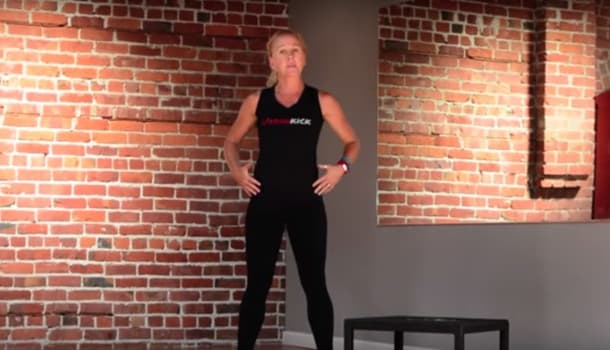Before we start jumping up and down, let’s look at why incorporating jumps into your workout may be the boost you need. You may have heard terms such as “plyometrics,” “reactive training” or “power workouts.” These terms may sound like exclusive training methods for professional athletes, but I am here to say (shout!) that you can safely incorporate power into your workouts, too. Some physiological benefits of jumps—and specifically, box jumps—include:
- Stronger bones
- Increased neuromuscular efficiency
- Functional strength
- Power
- Cardiorespiratory system stimulus
- Increased caloric expenditure
Before you incorporate box jumps into your regimen, make sure that you have the proper stability, core strength and mechanics to do them safely. This video will teach you how to work up to box jumps gradually.

To warm up, start with easy body-weight squats. Incorporate some arm swings, and roll up through the ankles to your toes. Standing knee tucks and bottom kickers are great to incorporate full range of motion and joint mobility. You can also always start with a few minutes of cardio, such as light walking or jogging.
Exercises in video:
- Box jump progression
- Body-weight squats with plantar flexion of foot
- Body-weight squats with low amplitude jump
- Body-weight forward jump
- Power step-up
- Low box jump




